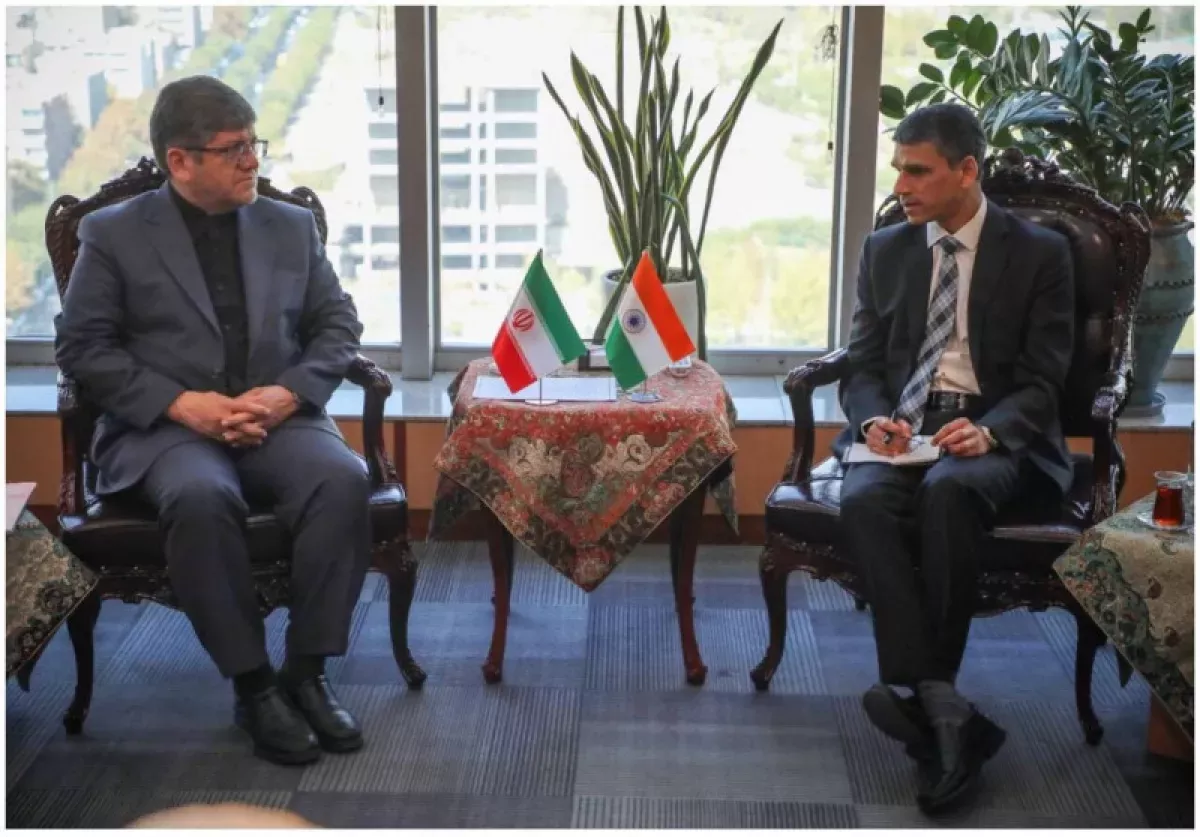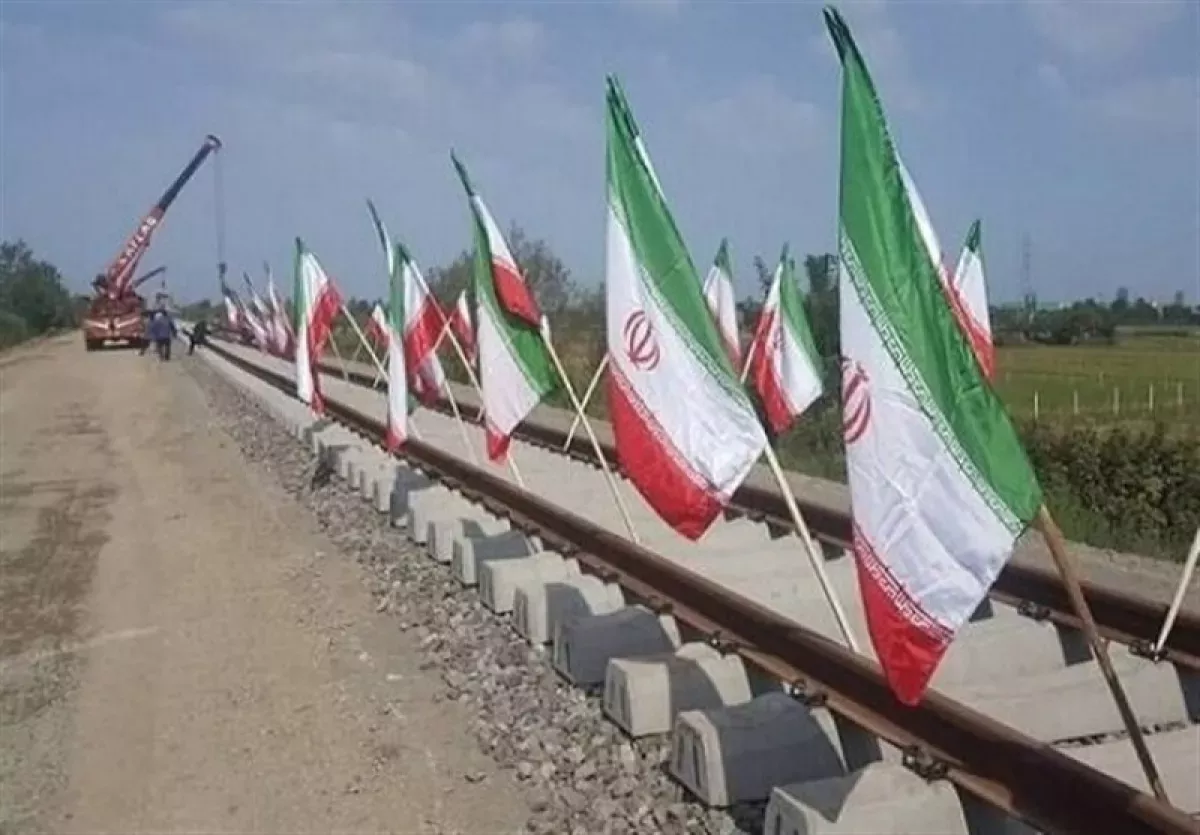North–South corridor missing its shortest link 162 kilometres that no one is building
In early November 2025, a milestone was reached in the development of the North–South International Transport Corridor (ITC): the first regular freight train arrived in Iran via the corridor’s eastern route, travelling from Russia through Central Asia. The train began its journey 900 kilometres north of Moscow, passed through Russia, Kazakhstan and Turkmenistan, and entered Iran via the Incheh Borun border crossing, reaching the Aprin dry port near Tehran.

Unlike the pilot runs of previous years, this route is designed to operate on a "regular" basis, with predictable departure intervals. As noted by Morteza Jafari, Deputy Director for Operations and Trade and Chairman of the Transit Committee of Iranian Railways: “On average, one container train from Russia will now arrive in Iran roughly once every ten days, and in the future, the number is expected to increase.”
Undoubtedly, the eastern branch of the North–South ITC is important for both Russia and Iran. However, the western route—connecting the Russian and Iranian rail networks via Azerbaijan over the shortest distance—is far cheaper and far more efficient. To launch it in full, only 162 kilometres of new railway must be laid between the provincial capital of Gilan, the city of Rasht, and the city of Astara on the Iranian–Azerbaijani border.
The Rasht–Astara railway is planned to run across flat terrain, with no obstacles such as mountains or major rivers. Technically, its construction should pose no challenges. Nonetheless, this section of the North–South ITC has, in practice, still not entered the construction phase.

The agreement on financing and constructing the Rasht–Astara project was signed on May 17, 2023. Russia views the 162-kilometre railway as a key link in the North–South ITC—a trade route connecting the Indian Ocean with the Baltic Sea that, according to some experts, could even compete with the Suez Canal. However, for more than two years after the signing, no meaningful progress was made in implementing the project.
Only recently did it become known that the Iranian authorities have amended the construction plan for the Rasht–Astara railway, officially to accelerate the work. Amin Taraffo, head of the Centre for International Affairs at Iran’s Ministry of Roads and Urban Development, announced that half of the necessary land plots for construction have already been purchased, and a contract between Iranian and Russian companies for building the line may be signed very soon.
“At present, coordination is underway in the fields of railway, road and infrastructure construction, and the issue of signing a contract between the Iranian and Russian companies serving as contractors for the Rasht–Astara railway is under consideration. It is expected that the contract will be signed in the near future, and the project will enter the implementation phase,” Amin Taraffo stated.
Construction will begin once the Iranian side completes the purchase of land plots required for the railway line. According to Iranian officials, this should happen by March 2026, although initially—at the time the agreement was signed—construction was expected to start as early as 2023. The construction work is projected to take 46 months from the moment it begins.
Why, then, is the implementation of the Rasht–Astara railway progressing so slowly? After all, launching this segment clearly serves the interests not only of Azerbaijan but also of Russia and Iran itself. In previous years, delays could be attributed to the influence of the Armenian lobby, which has traditionally opposed major transit projects that benefit Azerbaijan. However, today Armenia has effectively abandoned its previous policy of blocking regional communications and, on the contrary, is seeking to integrate itself into international transit chains in cooperation with Azerbaijan and Türkiye. Nevertheless, the pace of the Rasht–Astara project has not accelerated.
This is all the more puzzling given that work is now in full swing on other important segments of the North–South ITC inside Iran. Chief among them is the development of the port of Chabahar in the south of the country and the construction of a railway linking it to the national network.

On November 4, 2025, Jabbar Ali Zakeri, Deputy Minister of Roads and Urban Development and Executive Director of Iranian Railways, told India’s Ambassador to Iran, Rudra Gaurav Shresth, that the construction of the Chabahar–Zahedan railway line in southeastern Iran, as part of the North–South corridor, would be completed within the next six months.
According to Zakeri, the development of the North–South ITC is one of the top priorities for Iranian Railways. Iran expects that close cooperation among the participating countries will help accelerate progress in this area.
“Iran’s goal is to simplify the transport of trade goods between India and Russia through Iran. The development of Chabahar can play an effective role in expanding the North–South ITC and increasing Iran’s share in regional transit. Iran is committed to swiftly creating the necessary infrastructure to achieve this objective,” Jabbar Ali Zakeri stated.
Zakeri noted that freight transport between India’s port of Mumbai and Iran’s port of Chabahar, as well as subsequent joint cooperation between Russia and India, could significantly boost cargo transit along the North–South ITC. He stressed that Chabahar port cannot function effectively without the railway. The Iranian official pledged that the construction of the Chabahar–Zahedan railway would be completed within the next six months, with the line becoming operational within the following three months.
The meeting also highlighted the strategic role of Chabahar port and the railway in establishing rail links between Afghanistan and India. This route would substantially reduce both the time and distance for cargo transport between the two countries. While the shortest route between India and Afghanistan could easily pass through Pakistan, India is currently motivated by maintaining tensions between Afghanistan and Pakistan.
India’s Ambassador to Iran, Rudra Gaurav Shresth, expressed satisfaction with the development of railway cooperation between India and Iran and noted the effective role of Iranian Railways in promoting regional transit.

The total length of the Chabahar–Zahedan railway is 634 kilometres. Construction of the line began in 2010 and was accelerated in 2014 following a change of the contractor. The project gained further momentum after the signing of a Memorandum of Understanding (MoU) between India and Iran in May 2015 on the development of Chabahar port, and later—after the conclusion on May 13, 2024, of a long-term contract between India and Iran for the development of the Shahid Beheshti terminal at Chabahar port.
As a result, the construction of the 634-kilometre Chabahar–Zahedan railway will be completed in just six months, while the much simpler and cheaper 162-kilometre Rasht–Astara railway, at best, will only begin construction in six months’ time—if it even begins at all.
Theoretically, there could still be “principled” landowners who categorically refuse to sell their plots, providing yet another excuse to further delay the start of construction. And even if acquiring the land proceeds without major obstacles, the railway’s completion is “planned” to take a full 46 months—despite the line being nearly four times shorter than the Chabahar–Zahedan railway.
Moreover, unlike the Chabahar–Zahedan route, which passes through extremely rugged mountainous and desert terrain, the Rasht–Astara railway is planned to run across a populated and economically developed plain, “as flat as a table.”
In addition, cargo arriving from India at Chabahar but destined for Russia and Europe must continue onward, and the capacity of the “eastern route” of the North–South Transport Corridor is clearly insufficient for the future. Especially considering that the railway bypassing the Caspian on its eastern side through Turkmenistan and Kazakhstan is significantly longer than the route through Rasht, Astara, and Azerbaijan. As a result, shipments take longer in transit and delivery costs are higher.
Today, the artificial delay of the Rasht–Astara project has no rational explanation other than political. Unfortunately, India is still not ready to abandon its confrontation with Pakistan and is displeased with Azerbaijan’s and Türkiye’s comprehensive support for Pakistan. Consequently, the Indian authorities are, directly or indirectly, attempting to obstruct projects that benefit Azerbaijan and Türkiye, ultimately harming their own interests as well.
After all, the Rasht–Astara railway is ultimately crucial for India as well, providing the fastest possible transit for its cargo along the North–South ITC. Today, India is more than ever interested in a reliable logistics link with Russia and in the shortest route for delivering its goods to Europe. Both objectives depend directly on the Rasht–Astara line; without it, freight trains will be forced for many years to make a significant detour around the Caspian Sea.
India requires a comprehensive development of the North–South ITC, which is why it is actively pushing the Iranian side to accelerate the construction of the Chabahar–Zahedan railway. Yet paradoxically, the implementation of the equally important Rasht–Astara railway is being effectively delayed and, in practice, sabotaged.
By Vladimir Tskhvediani, Georgia, exclusively for Caliber.Az








